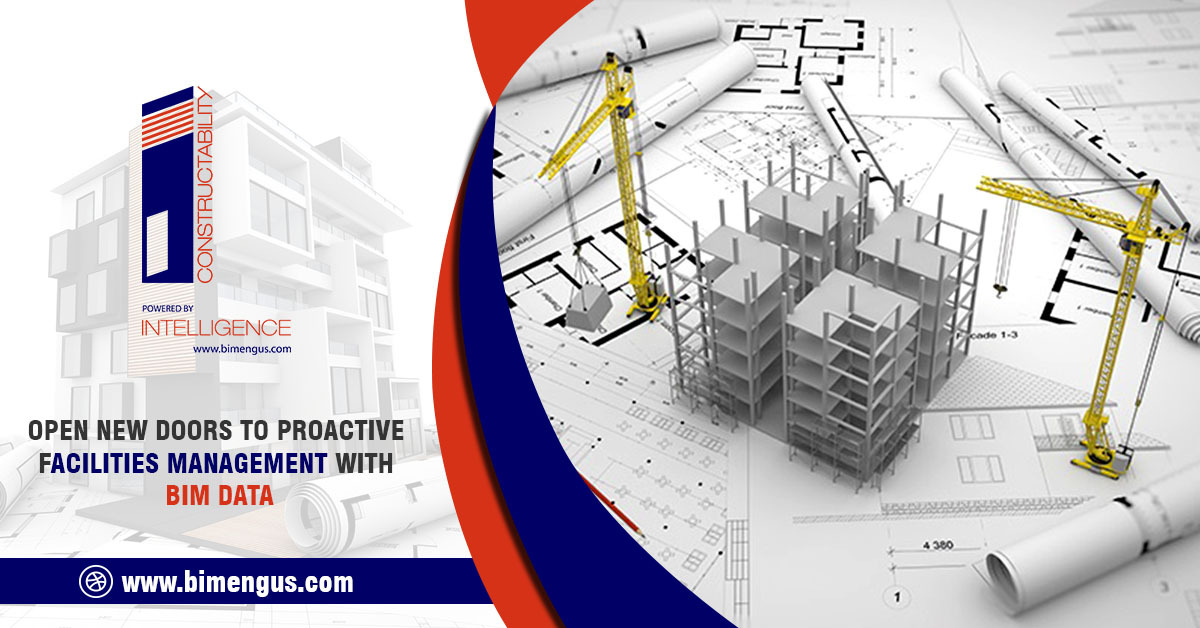Abstract
- BIM influences the complete lifecycle of a project viz. realization, operations, and facilities management
- Operations and facilities management can contribute to a maximum expenditure
- The adoption of BIM processes and tools reduces the cost of building operations and maintenance, enable greater efficiency, and saves on project time
- Synergies across various processes help stakeholders leverage better building, sustainability, and reduce structure degradation
Introduction
- Buildings, facilities, and infrastructure need to stay habitable throughout their service – BIM can be implemented in two ways viz. new and existing
- For new projects, BIM can be a great enabler if adopted for every lifecycle of the project, viz. design to facilities management, and demolition
- For existing projects, BIM is implemented for the maintenance stage based on information, level of detail, software, and documentation
- The process of Facilities Management can be optimized with a detailed overview of information, structure, and existing building conditions
Facility Management is categorized into two types.
- Preventive management – Mitigate, diminish, or eliminate failures before they begin
- Reactive management – React & solve a maintenance task after the failure has been detected
Maintenance activities can be managed through various technology platforms.
- Computer-Aided Facilities Management (CAFM) – the use of software to plan and monitor activities that lead to high-cost savings
- Computerized Maintenance Management Systems (CMMS) – an interlinked building database that stores information on inventory, preventive maintenance, etc.
Potential challenges that need attention.
- Absence of best practices due to knowledge imperfection
- Absence of approval from project owners to implement BIM for FM to leverage cost savings
- Inability to understand the concept of Facilities Management
- Inadequacies of BIM education and skills
- Non-maintenance friendly design deficiencies
- Inaccurate information during project handover
- Issues of interoperability between 3D models and FM
- Improper contractual framework for adoption
What are the applications of BIM data in Facilities Management?

What are the questions that need to be answered to set up a strong BIM for FM plan?
- What is the type of data that needs controlling?
- What are the processes or technology platforms used to manage data and facilities?
- What kinds of systems have been implemented?
- What is the knowledge and skill level of your Facilities Management team?
- What part of your building or infrastructure is new or existing?
- What are your future operational goals?
BIM enables Facilities Management.
- Comprehensive data transfer and update automation of building components with 6D BIM.
- Implementing Facilities Management early in the design process to leverage better impact
- Make BIM data important through asset info, schedules, and information management
- Mitigate conflicts through clash detection and boost space management
- Create maintenance activities based on service history, contract info, and accurate specifications
- Reduce environmental impacts based on efficient energy adoption and sustainability
5 key enablers of Facilities Management offered by BIM.

The most efficient BIM for FM process structure

Top Facilities Management Trends of 2020 & beyond.

Biometric system – verify human identity based on unique characteristics based on fingerprint scanning or retinal recognition
Wearable technology – using smart-wearable technology for secure data collection and analysis
Building Information Modeling (BIM) – 3D modeling based on various processes, libraries, HVAC components, lighting & electrical systems, and product specifications
Autonomous technology – using IoT to build smart and increase efficiency, save energy, and analyze vital data based on space metrics.
Drones and LIDAR technology – drones and LIDAR technology to view building and ground assets. Collect precise information and convert it into highly visual 3D models.
Everything considered…
- BIM for facilities management delivers a myriad of benefits for various challenges
- It is a one-true source of valuable and dependable data for a specific facility
- It helps facilities managers save effort, time, cost on a perpetual basis
- Facilities managers can count on BIM for FM to improve asset awareness and solve problems on time
- In short, it gives facility managers complete control over every facility aspect from viz. operations to maintenance
Visit us: – www.bimengus.com

